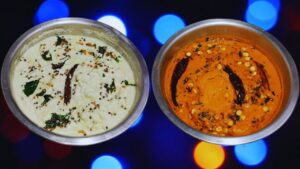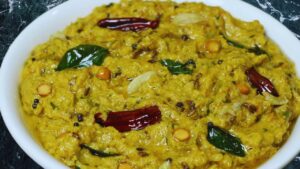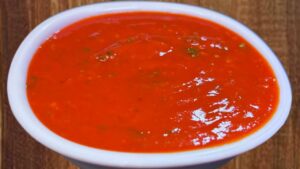Mustard chutney is more commonly referred to as Sarson Ki Chutney and combines mustard seeds paste and a variety of other ingredients such as garlic, green chilies, sugar, and salt. It is also tempered to perfection with green chilies and turmeric powder cooked in mustard oil with a dash of lemon juice added in the end as well. Here are the simple steps to make mustard chutney at home quickly and easily.

KEY TAKEAWAYS
- Mustard chutney is a versatile condiment that will enhance the taste of your meals.
- Pair the chutney with Indian bread like roti, paratha, and naan, variety of rice dishes like pulao, biryani, khichdi, steamed white rice, different types of curries, South Indian dishes like dosa, idli, and snack items like samosas, kebabs, grilled meats, sandwiches, wraps, or a cheese platter.
- Store the chutney in an airtight container in your fridge.
- Mustard chutney tastes hot, pungent, and slightly sweet.
- Kasundi chutney, sarson da saag chutney, and mustard mango chutney will offer a closely similar taste as mustard chutney.
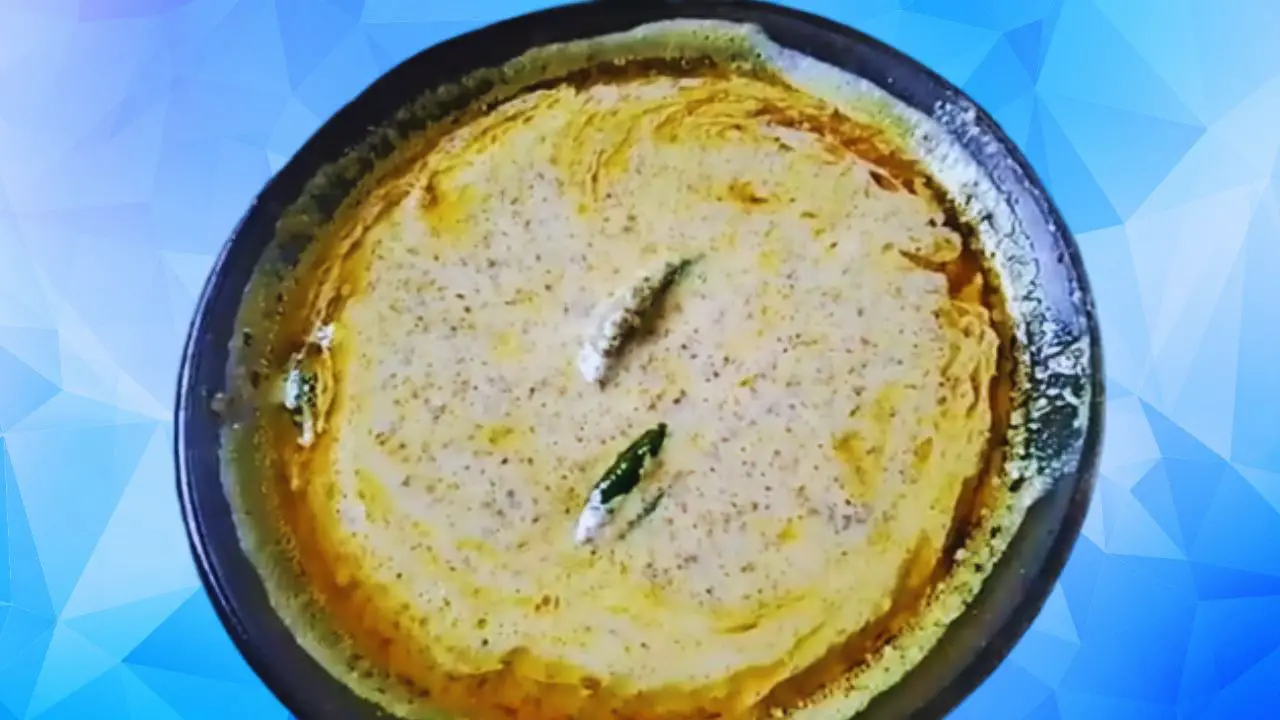
I got this chutney recipe from a mobile recharge shop owner. While waiting for my son’s data plan to activate, I noticed her eating from a foil packet. It smelled delicious. She smiled and said she made it quickly in the morning and usually brings it every day for lunch. She also said that it elevates the taste of the lunch immensely.
I asked for the recipe, and she jotted it down on a recharge slip. I tried it the next day. My husband said it had zing, and the boys said it felt “like quick bytes.” Now, it is our instant craving during meals. That moment reminded me that even the fastest corners hide recipes that linger far longer than the recharge.
How to Make Mustard Chutney? (Step by Step Guide with Images)
Step 1: Take 50 gm of mustard seeds in a bowl.
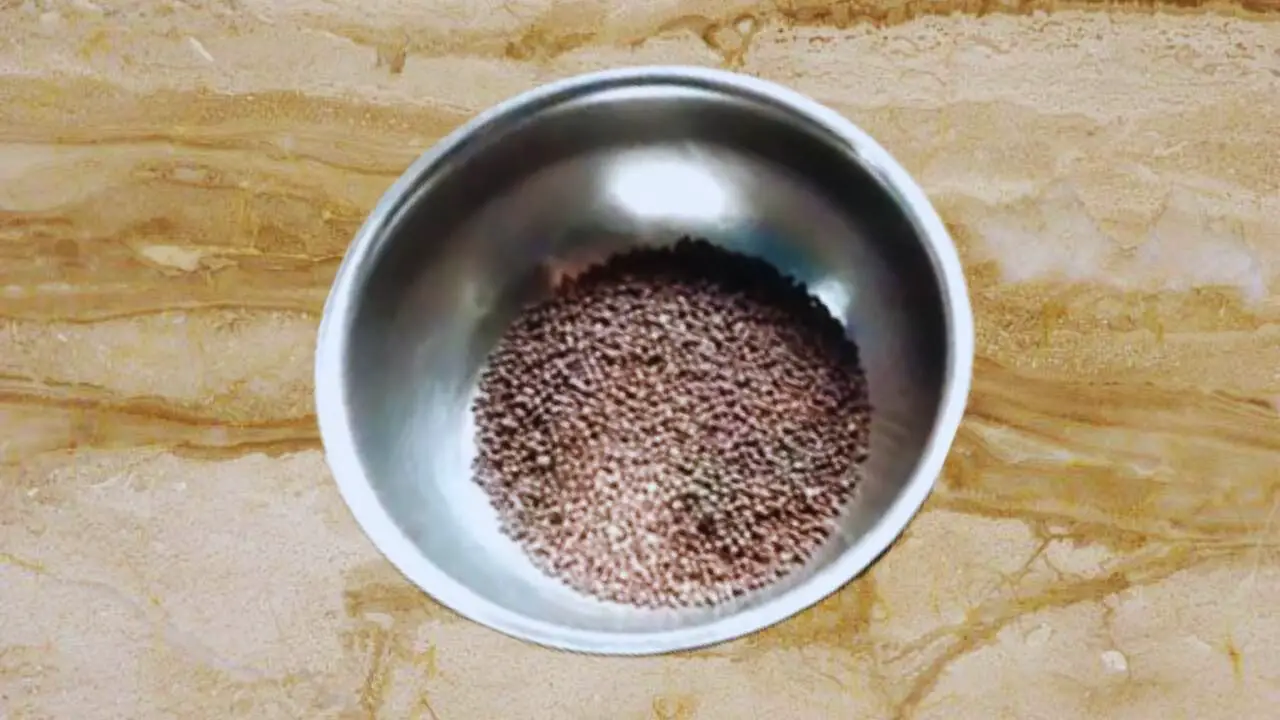
Step 2: Pour water, cover them, and let them soak for about two hours.
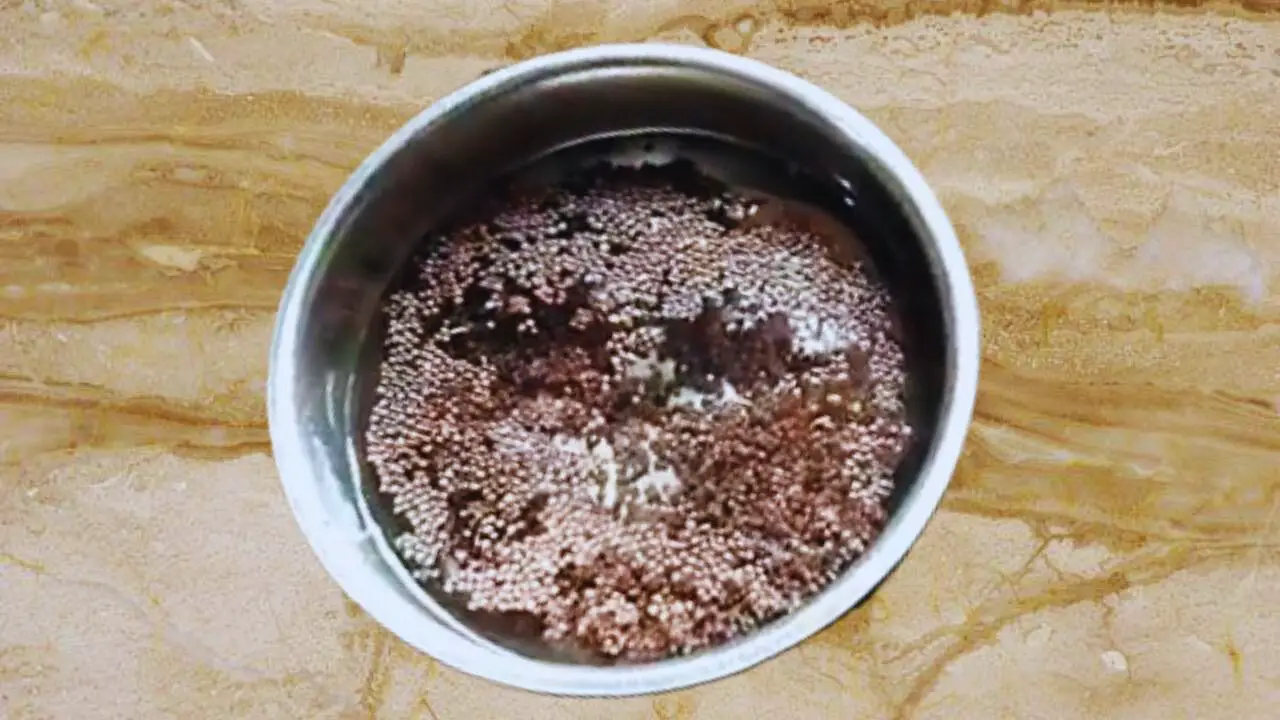
Step 3: Strain the mustard seeds. Wash them nicely with additional water.
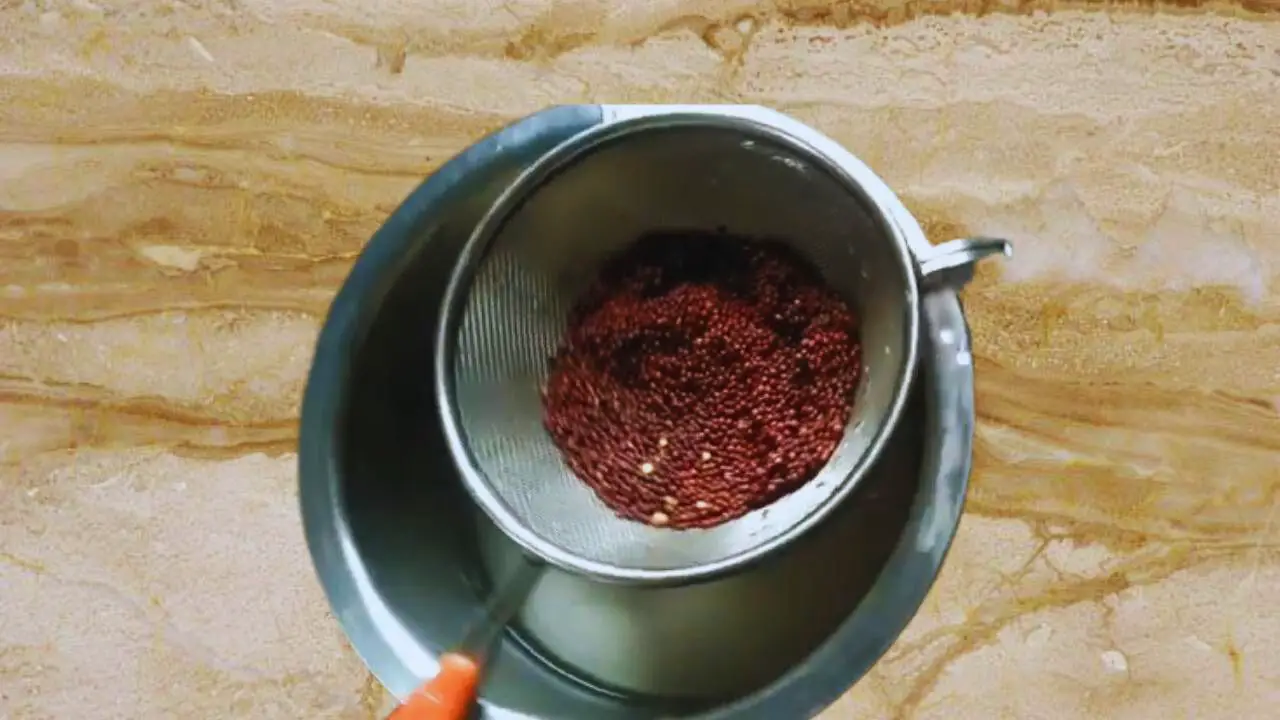
Step 4: Now, put them in a grinder.
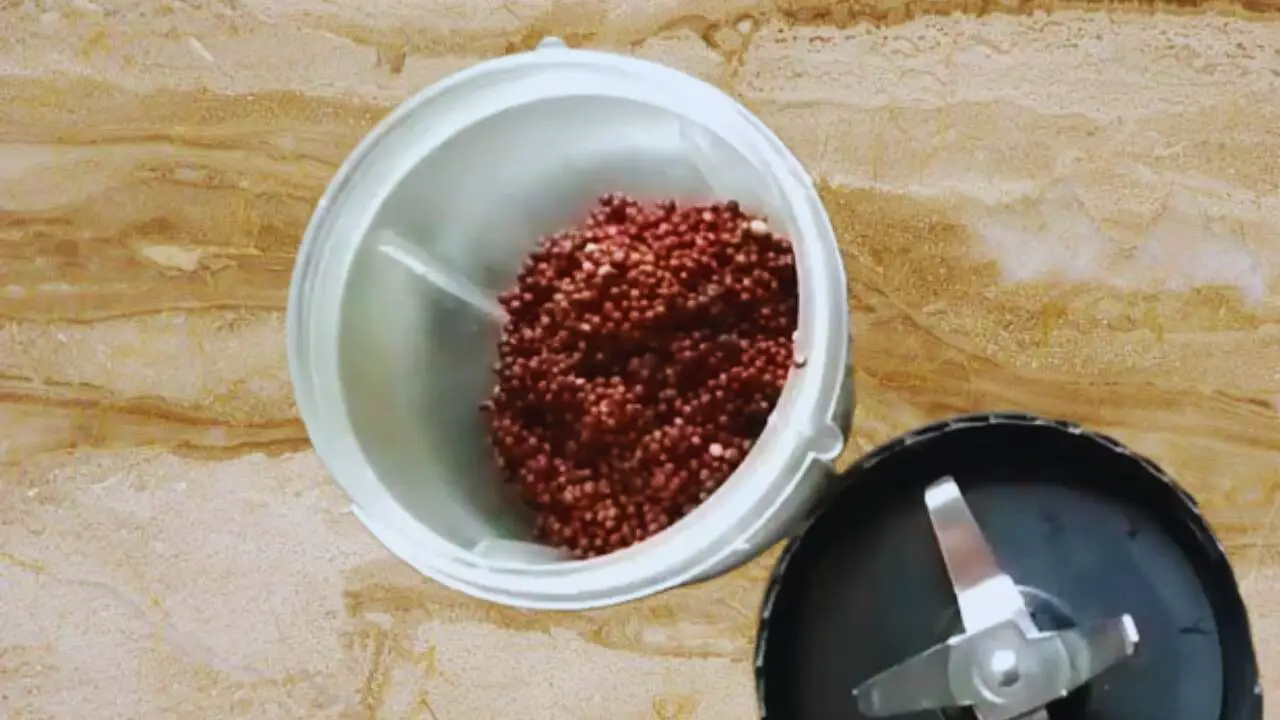
Step 5: Then, add some water to it.
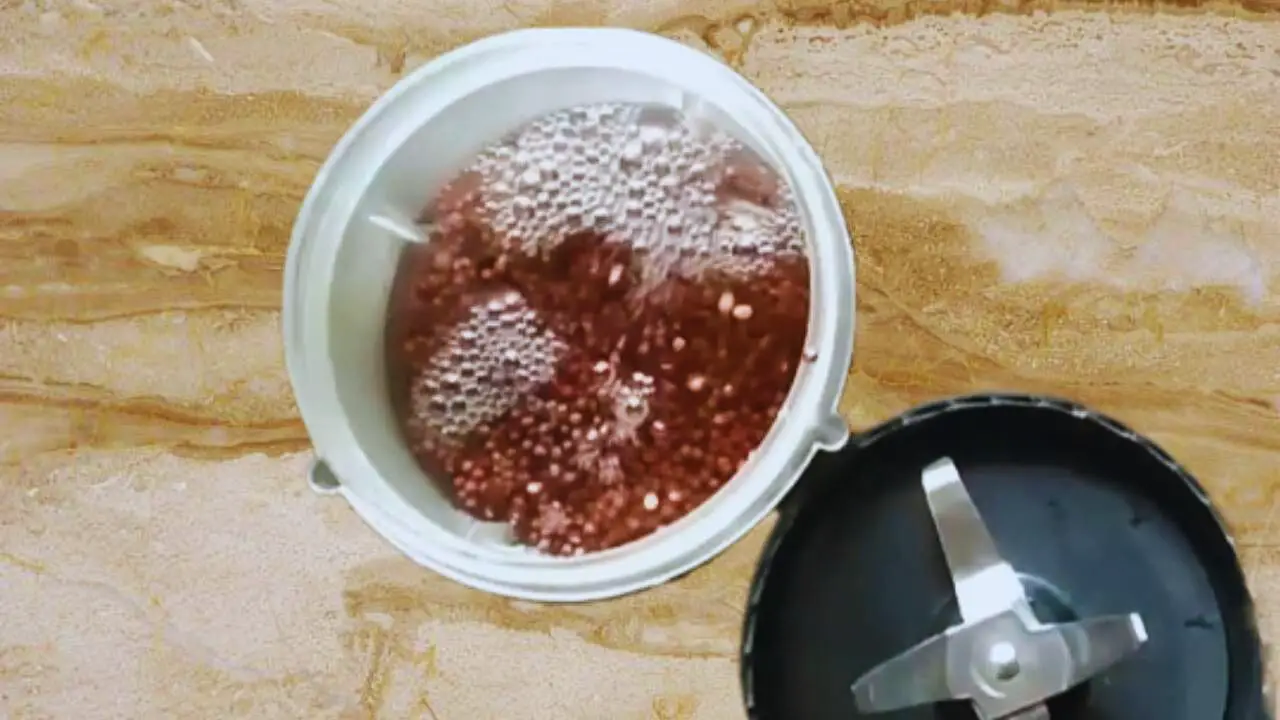
Step 6: Now, add 12 to 15 deskinned, fresh garlic cloves in it.
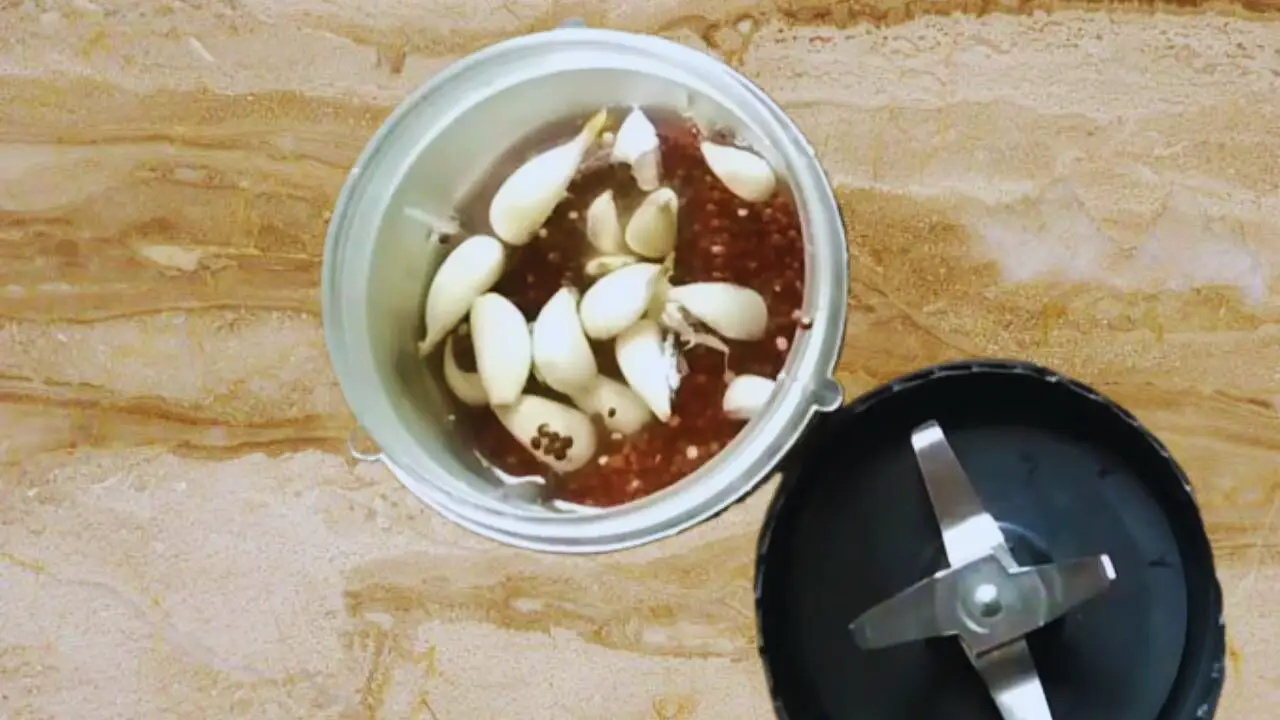
Step 7: Follow it with 2 pieces of fresh green chilies, broken into half.
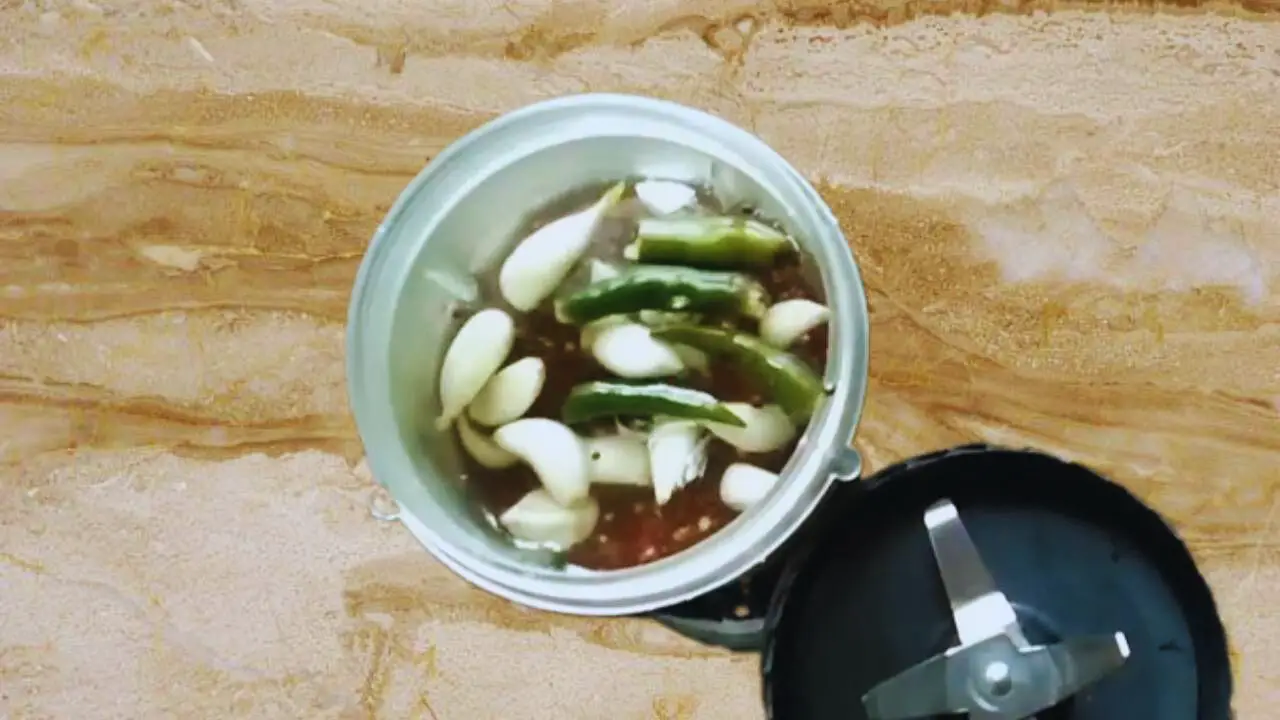
Step 8: Grind them just once to a relatively coarse and thick paste.
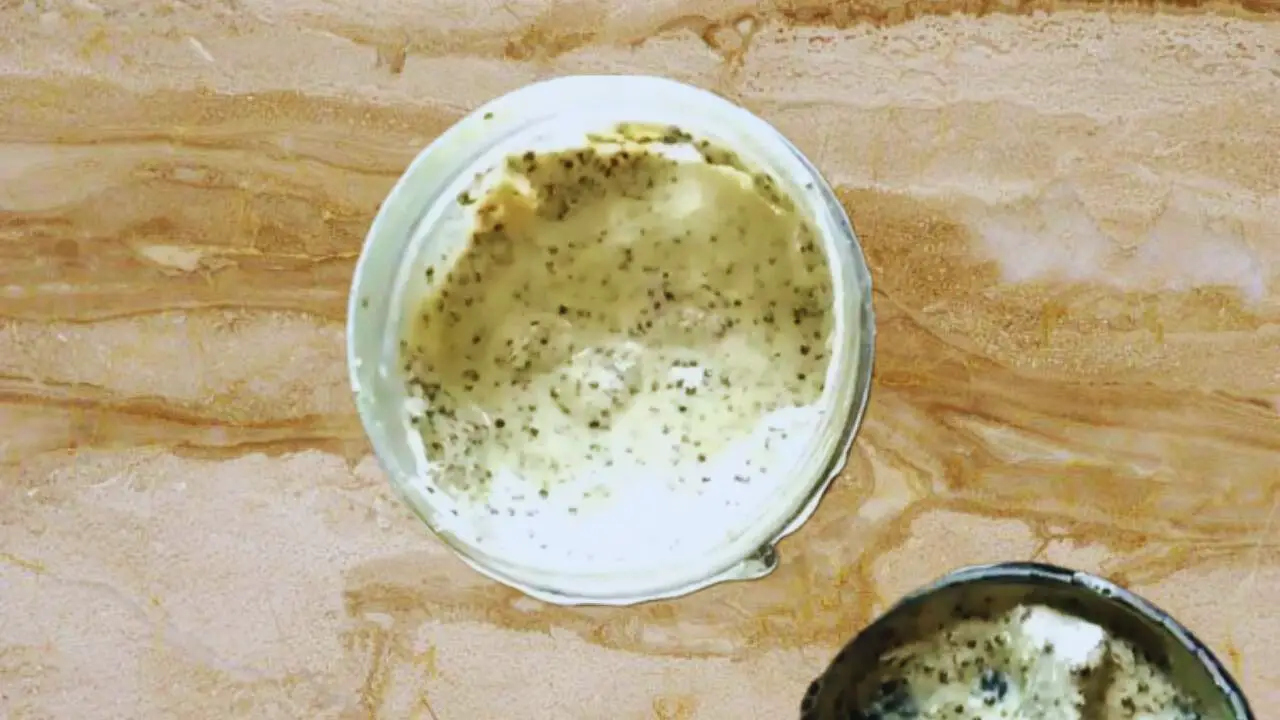
(Pro tip: Do not grind them several times to get a fine paste at this point. You will have to blend it again after adding some more ingredients to it. Grinding it to a fine paste now will not give your mustard chutney the desired texture).
Step 9: Now, add 1 tsp of salt to the paste in the grinder.
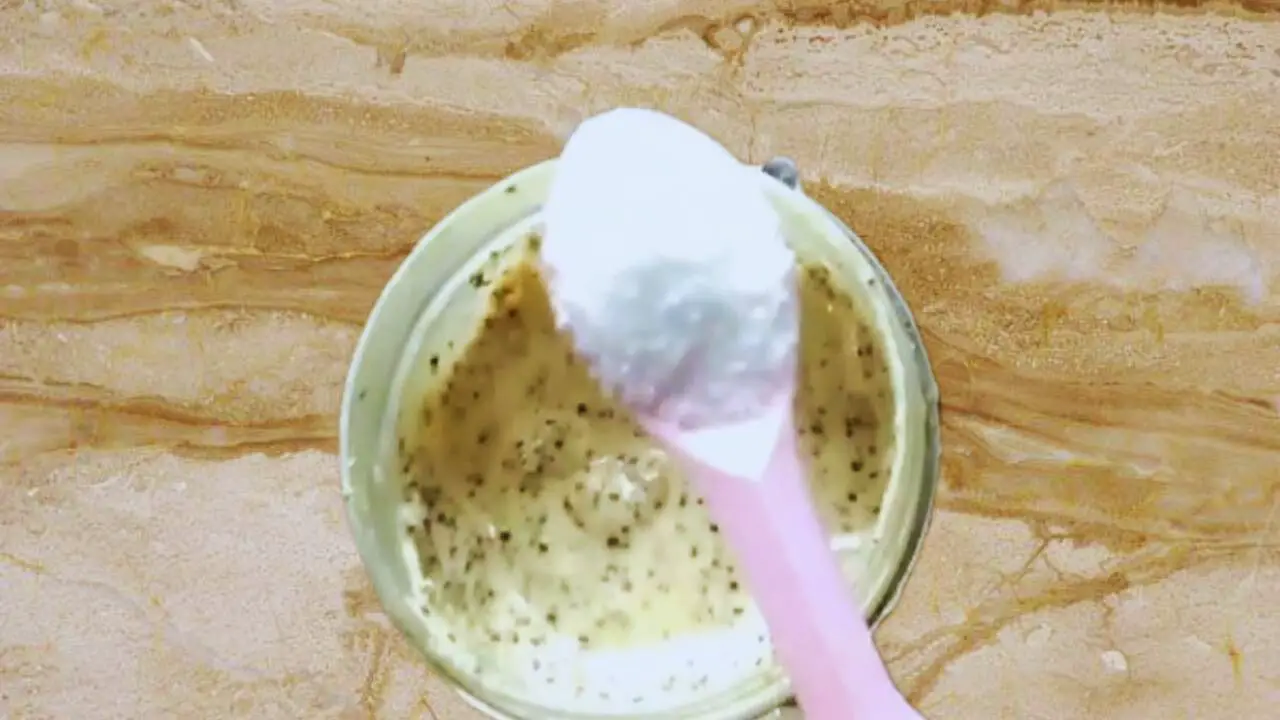
Step 10: Then add 1 tbsp of sugar to it.

Step 11: Mix them nicely.
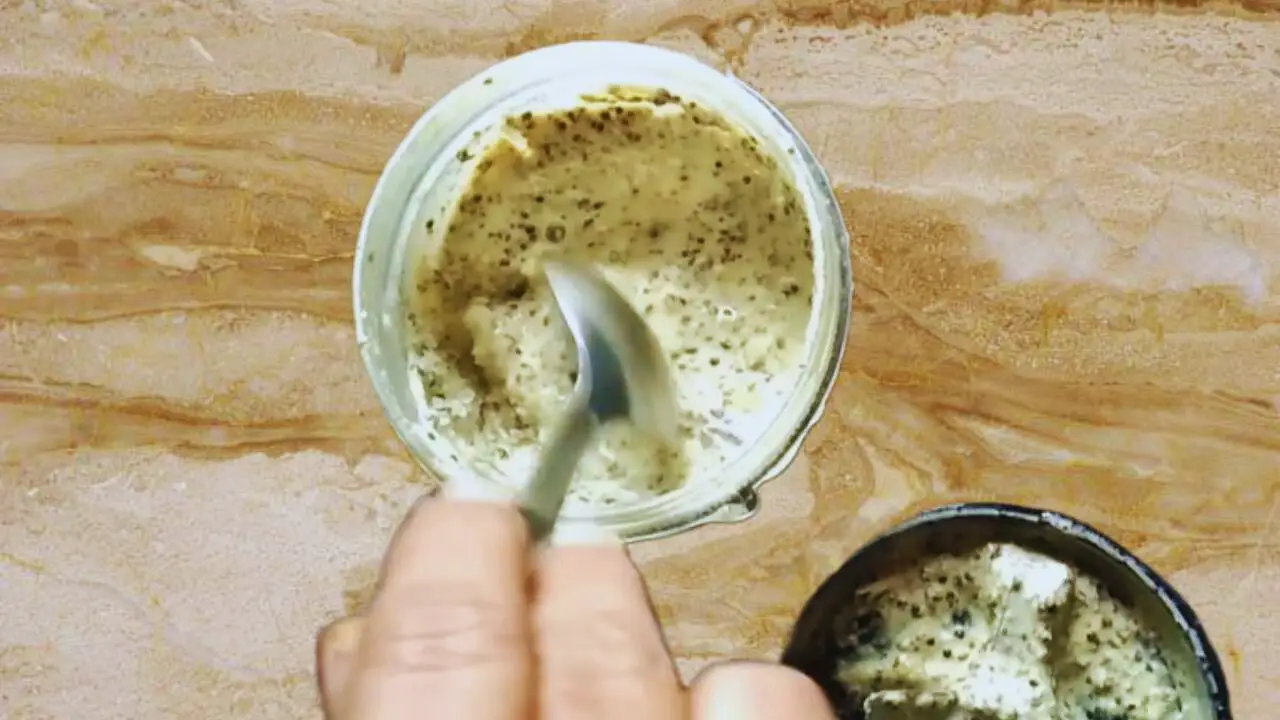
Step 12: Finally, add a little bit more water to the paste in the grinder.
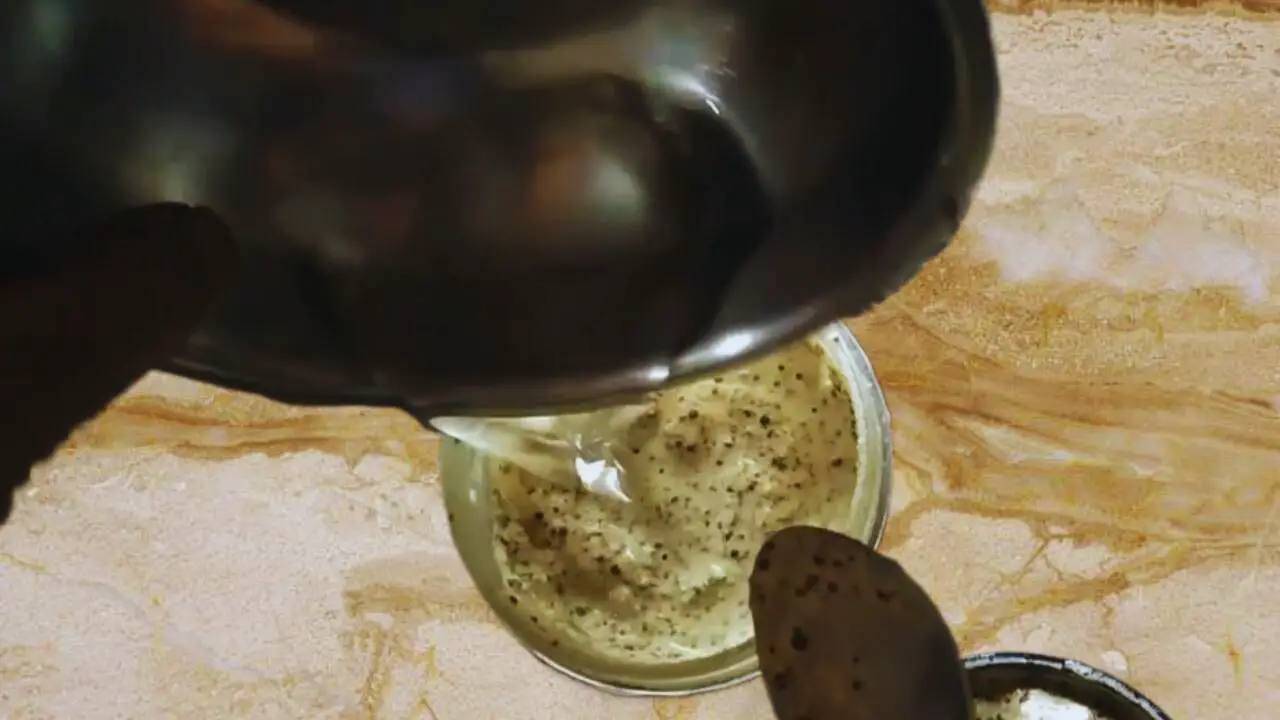
Step 13: Blend them nicely this time to a finer and smoother paste.

(Pro tip: If you want a super fine texture, blend it a couple of times. However, do not overdo it).
Step 14: When done and you are happy with the texture of the paste, transfer it to a bowl from the grinder.
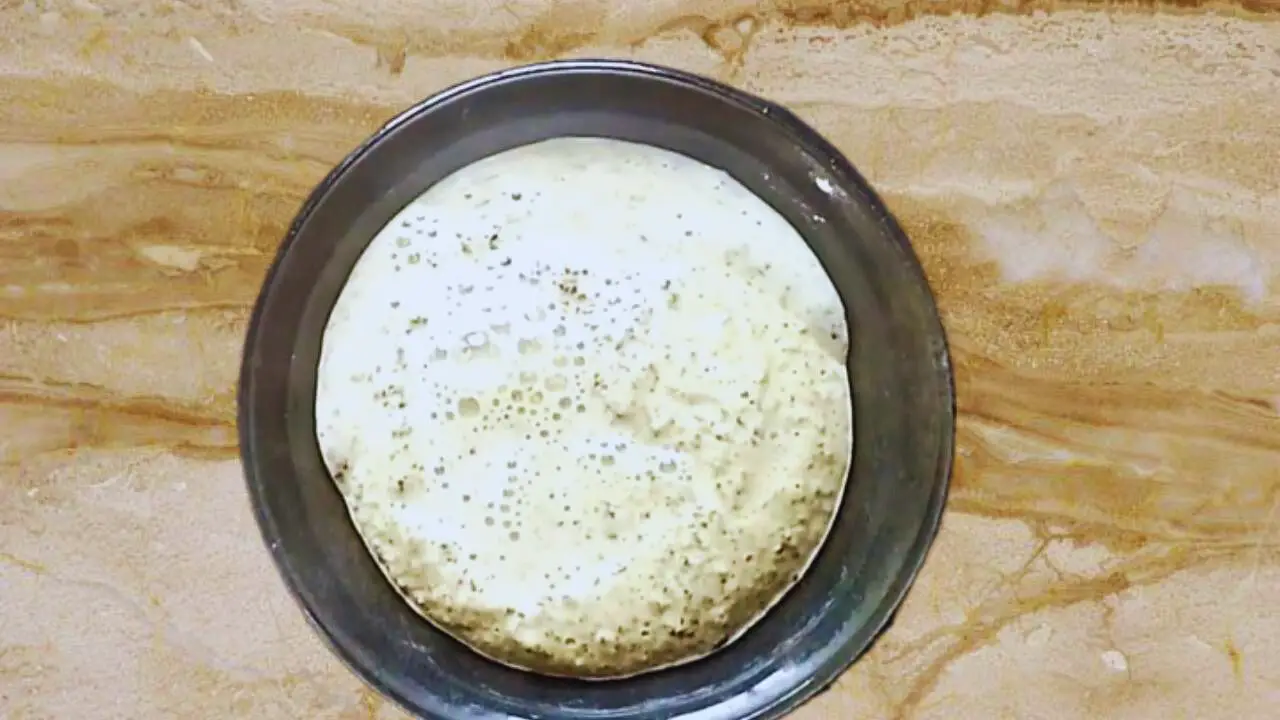
Step 15: Also, wash the grinder with a little bit of water and add it to the paste in the bowl.
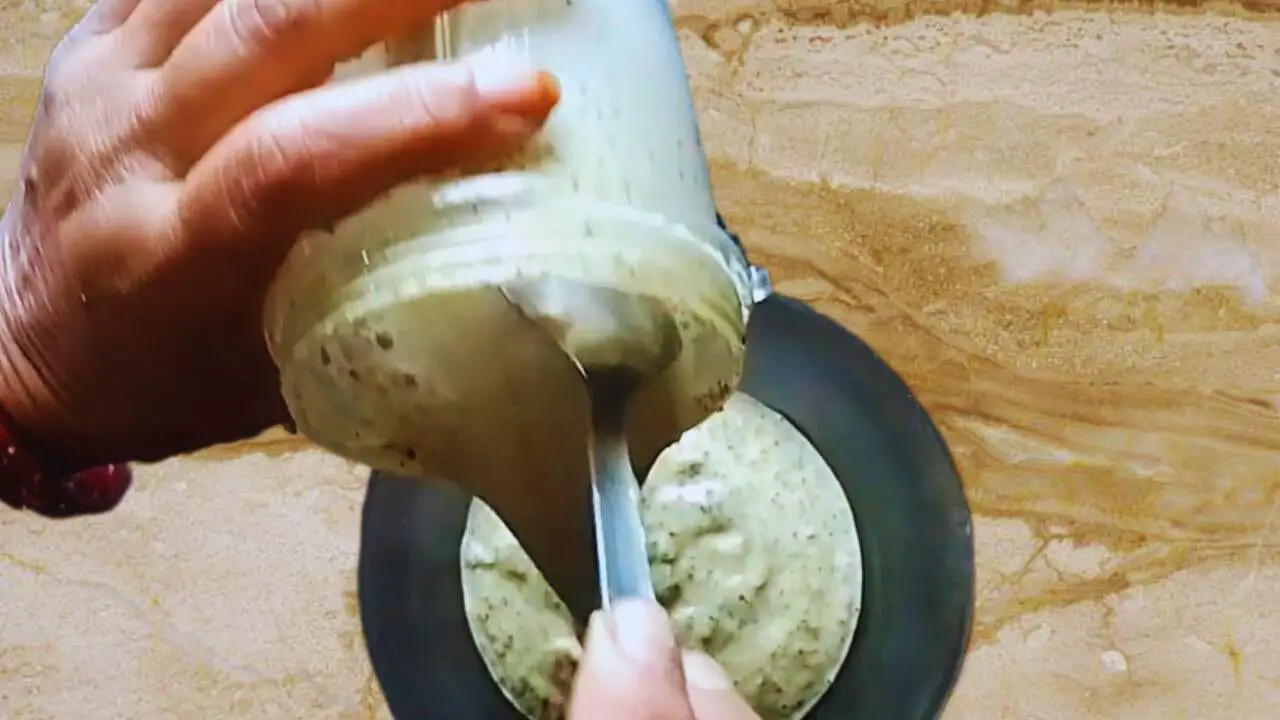
Step 16: Mix it nicely.
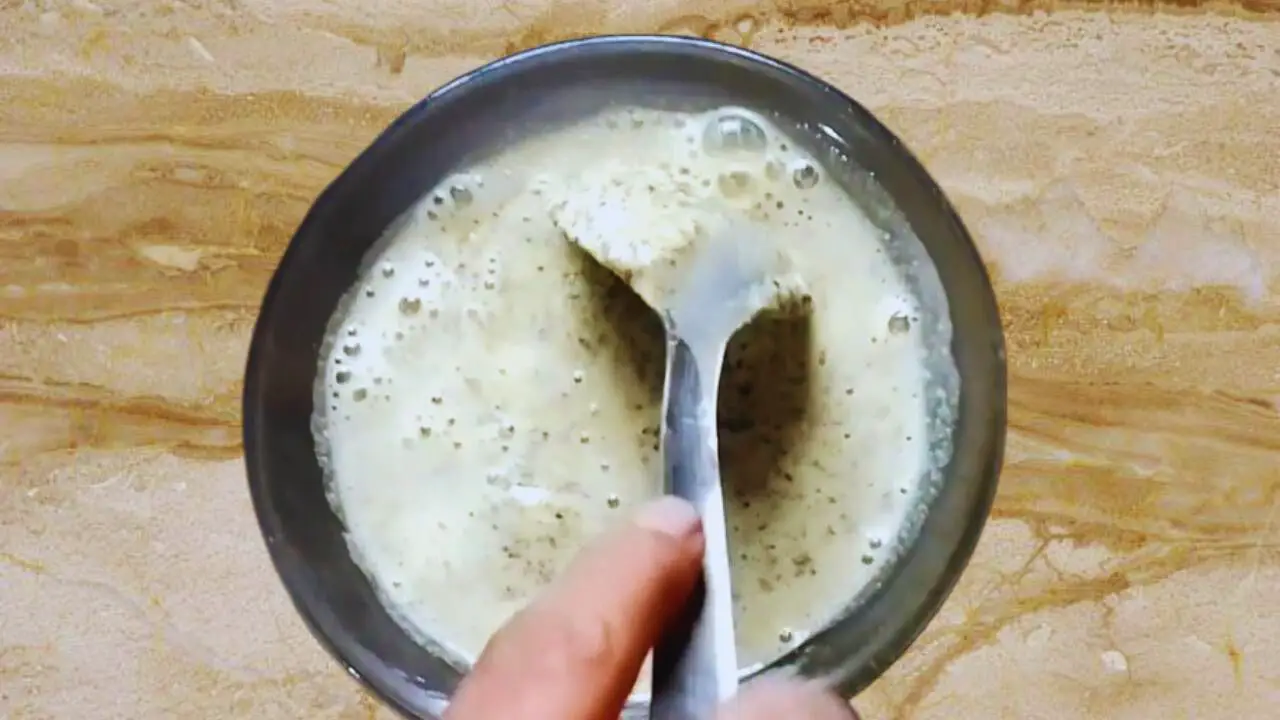
Step 17: Check the texture.
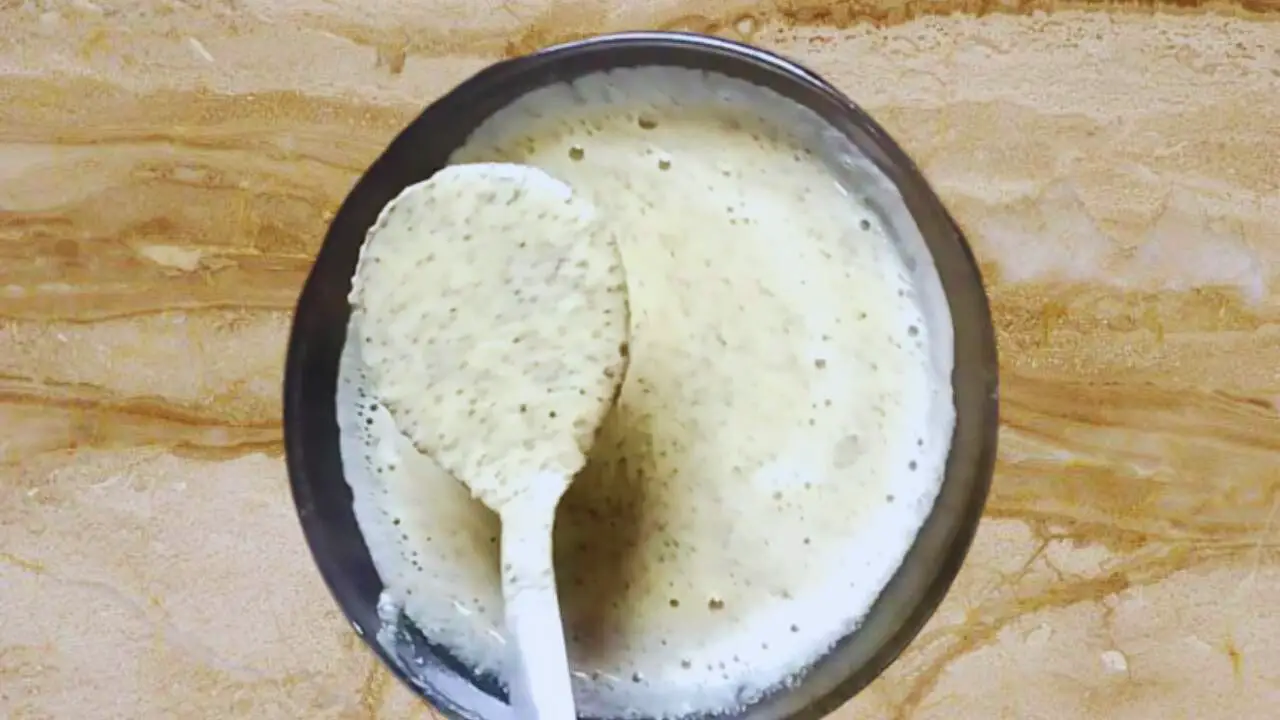
Step 18: When you are happy with the texture, set the bowl with the mustard paste aside.

Step 19: Now, for tempering the mustard chutney, take a tadka pan and heat it on your gas stove on a medium flame. When it is hot enough, put 3 tbsp of mustard oil in it.
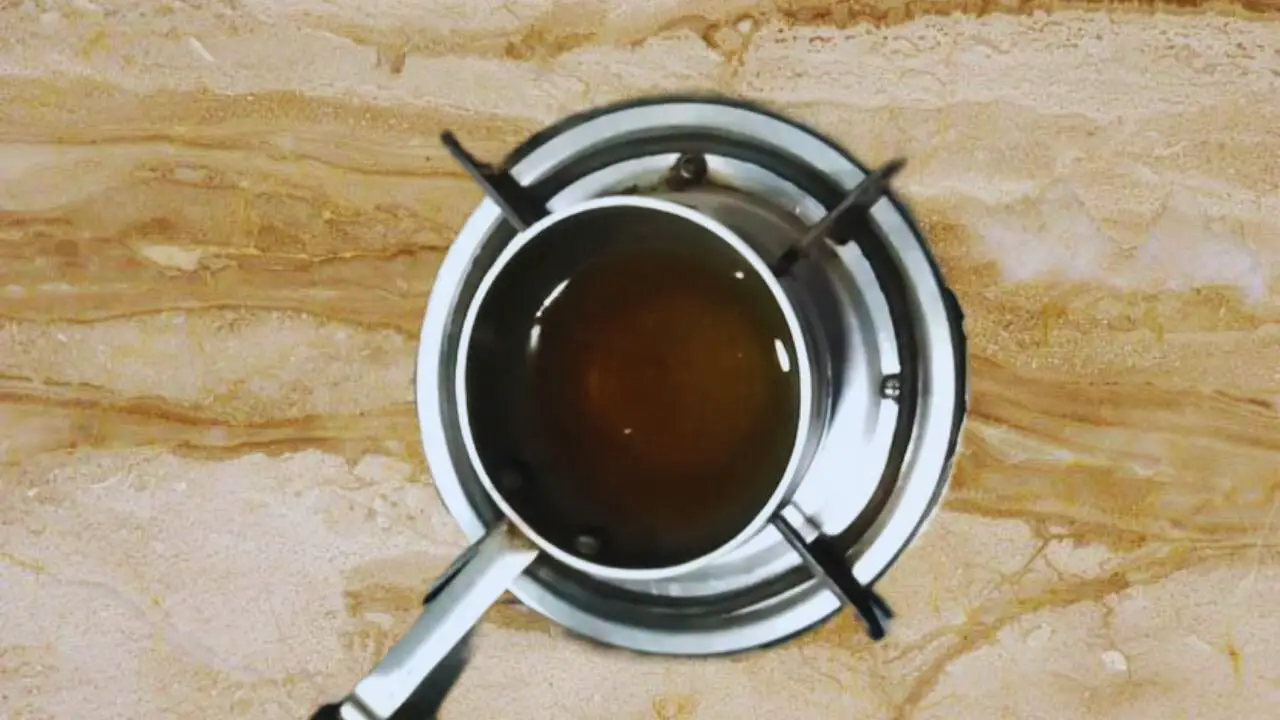
Step 20: When the oil is hot, put ½ tbsp of turmeric powder in it.

Step 21: While it boils, put 4 pieces of fresh green chilies, slit from the middle to the tadka pan.
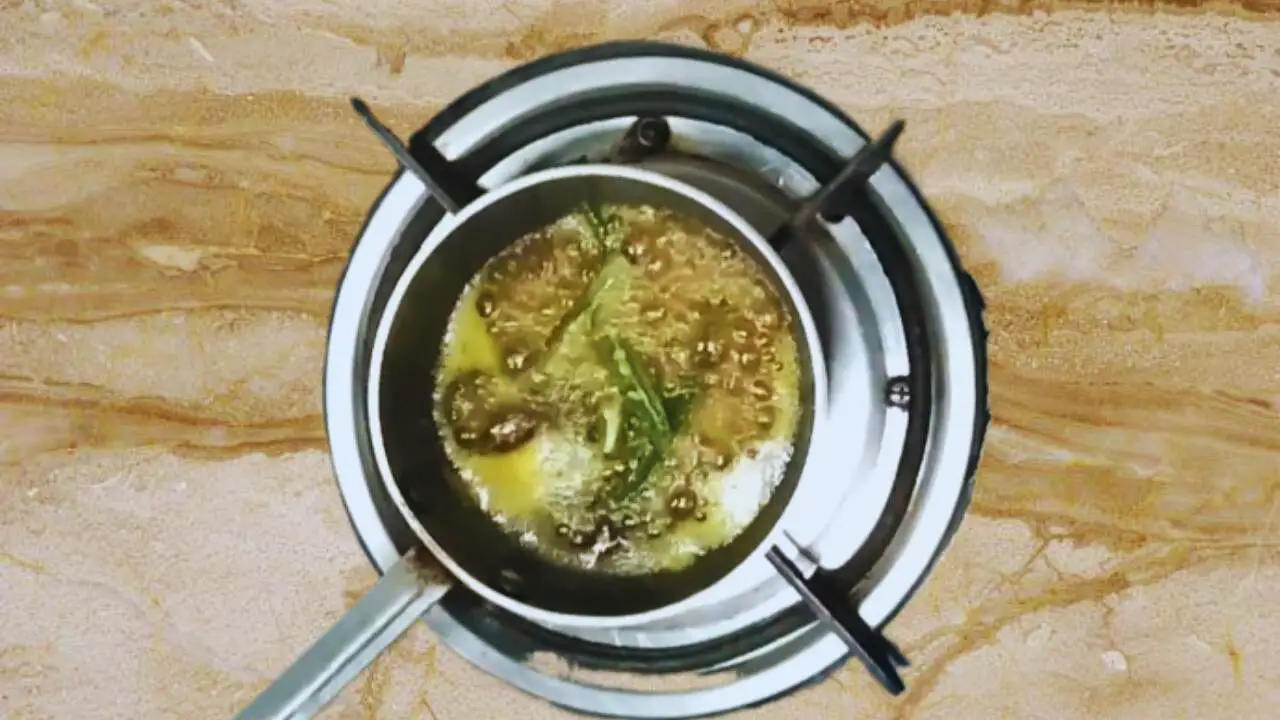
Step 22: Let it fry for about 10 to 15 seconds.
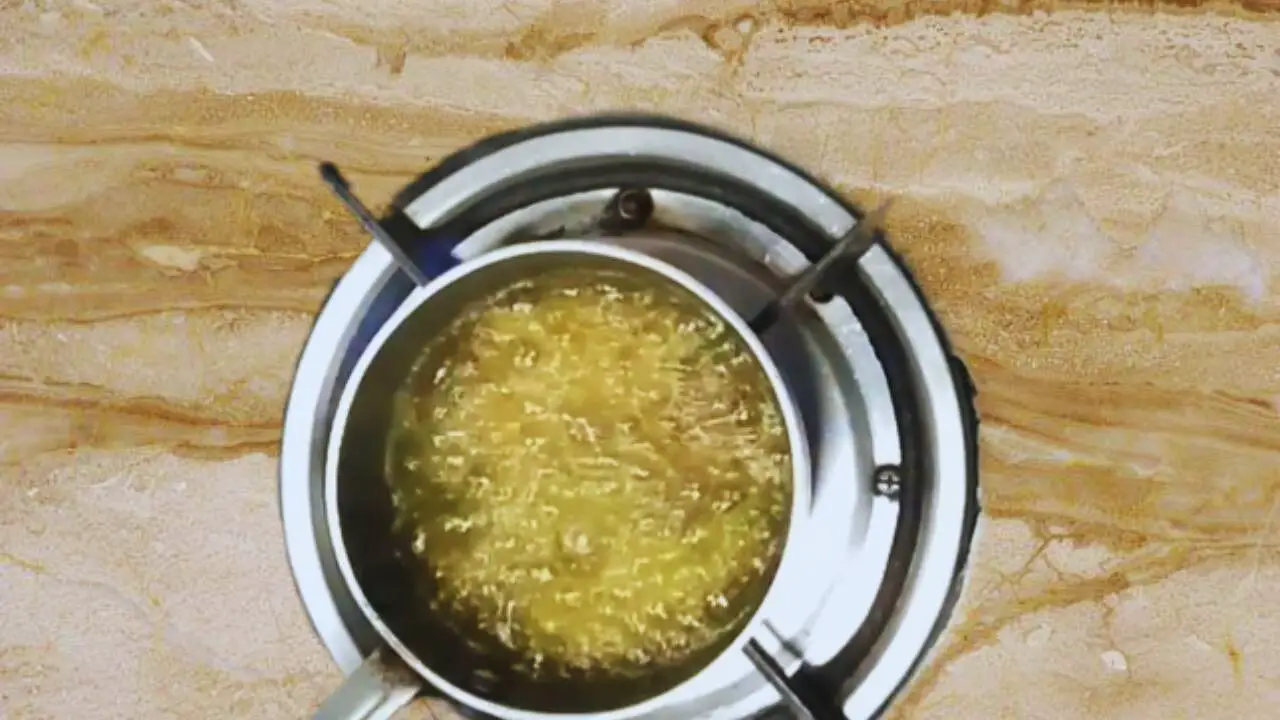
(Pro tip: Be careful at this point because the seeds of the green chilies may crackle and sprinkle hot oil).
Step 23: Now, quickly pour the content from the tadka pan into the bowl containing the mustard paste.
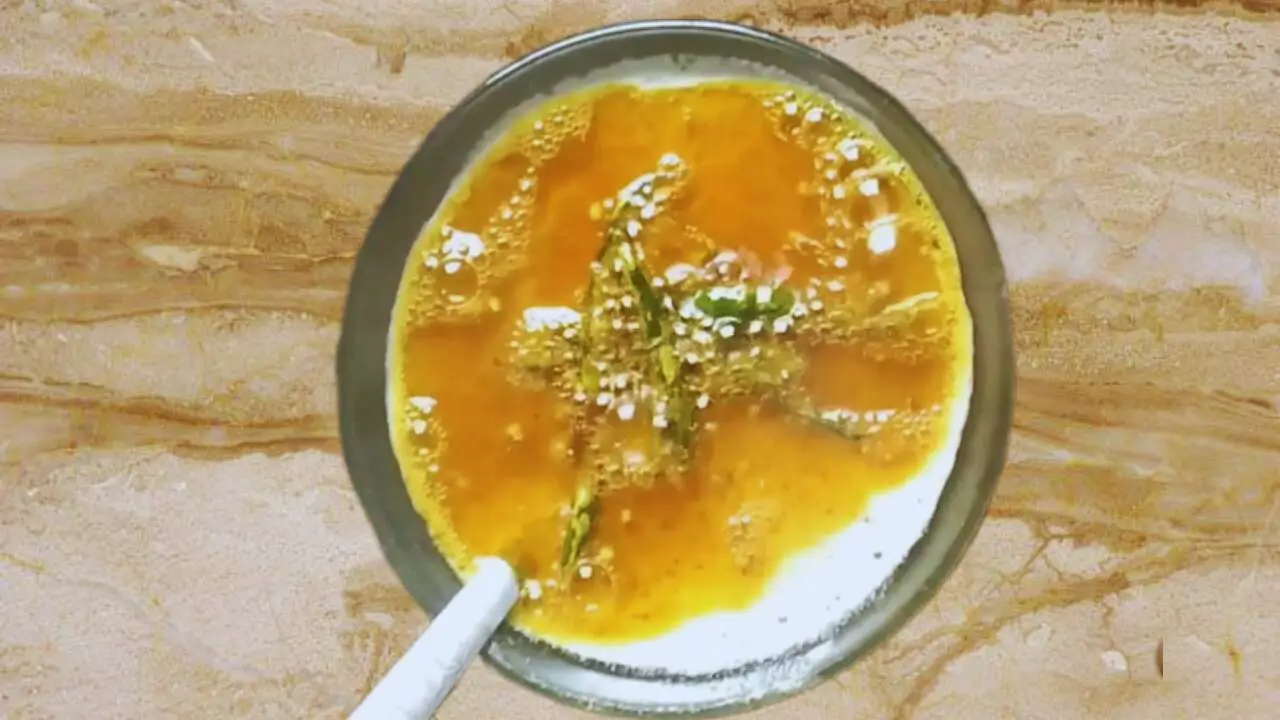
Step 24: Mix it nicely.
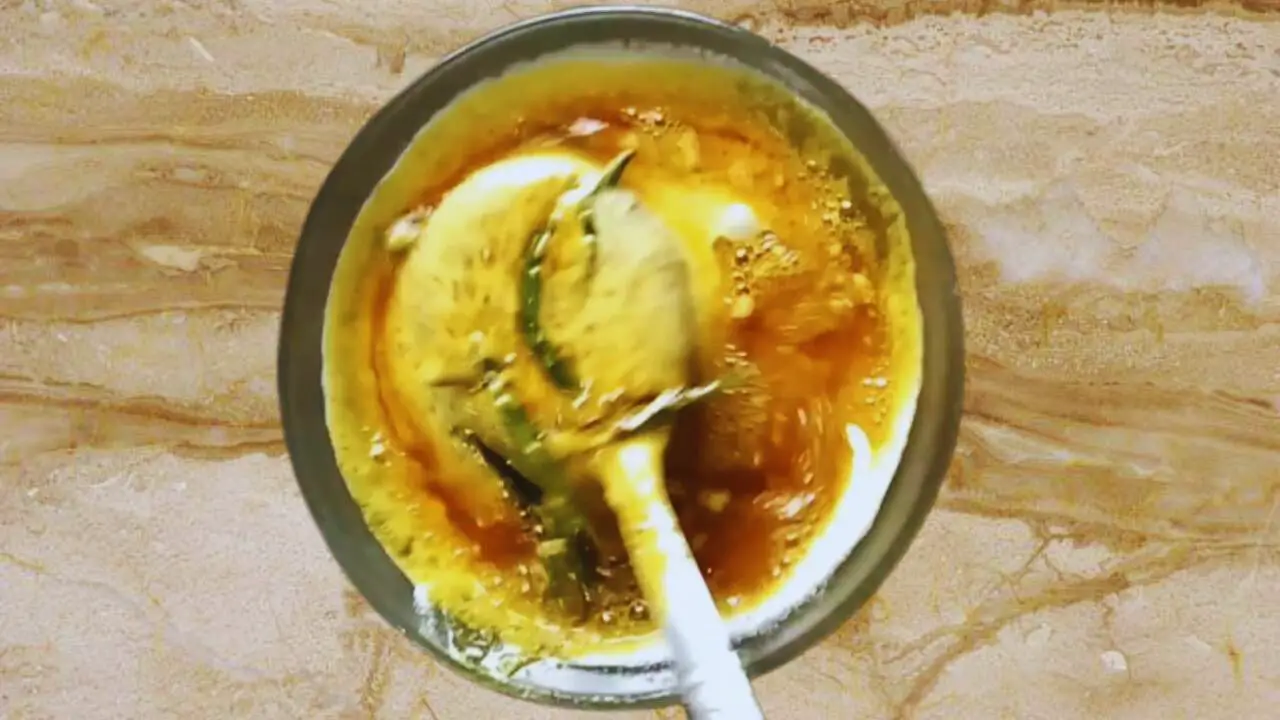
Step 25: Finally, add about 2 tbsp of fresh lemon juice to the paste. Ideally, two standard-sized lemons would produce roughly 2 tbsp of juice.
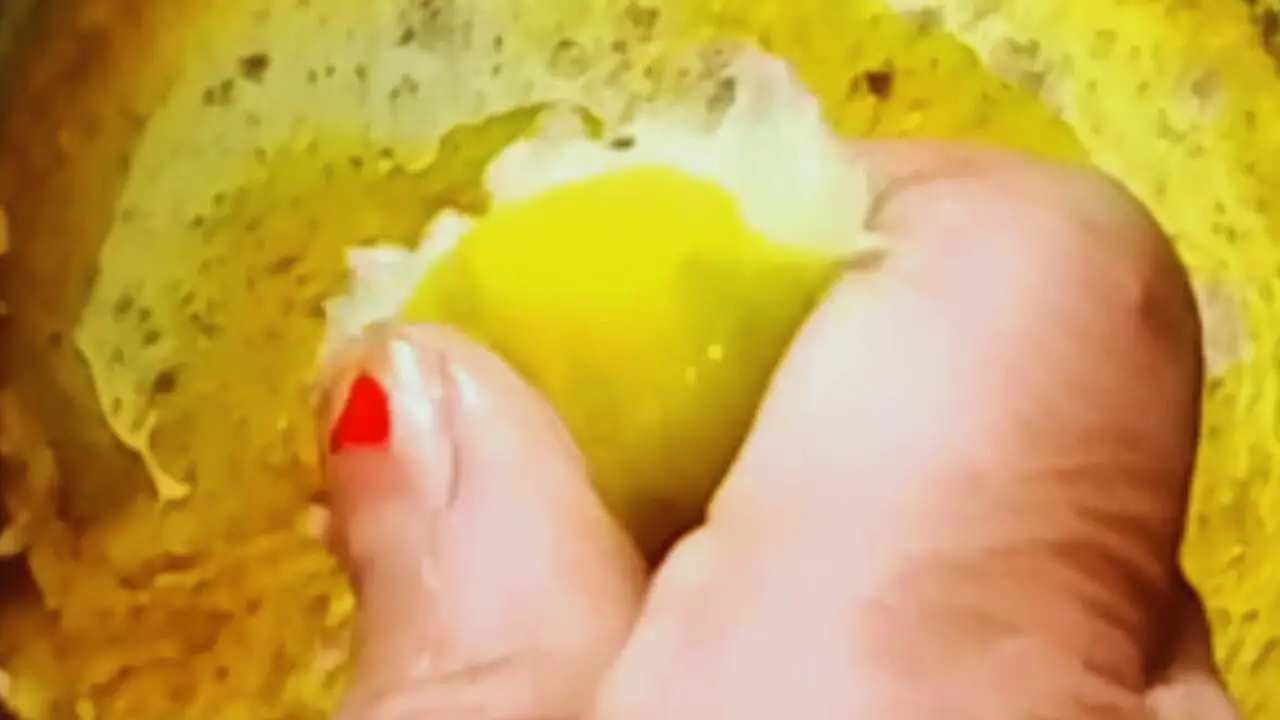
Step 26: Give it a final stir to mix everything nicely and your homemade mustard chutney is ready to consume.
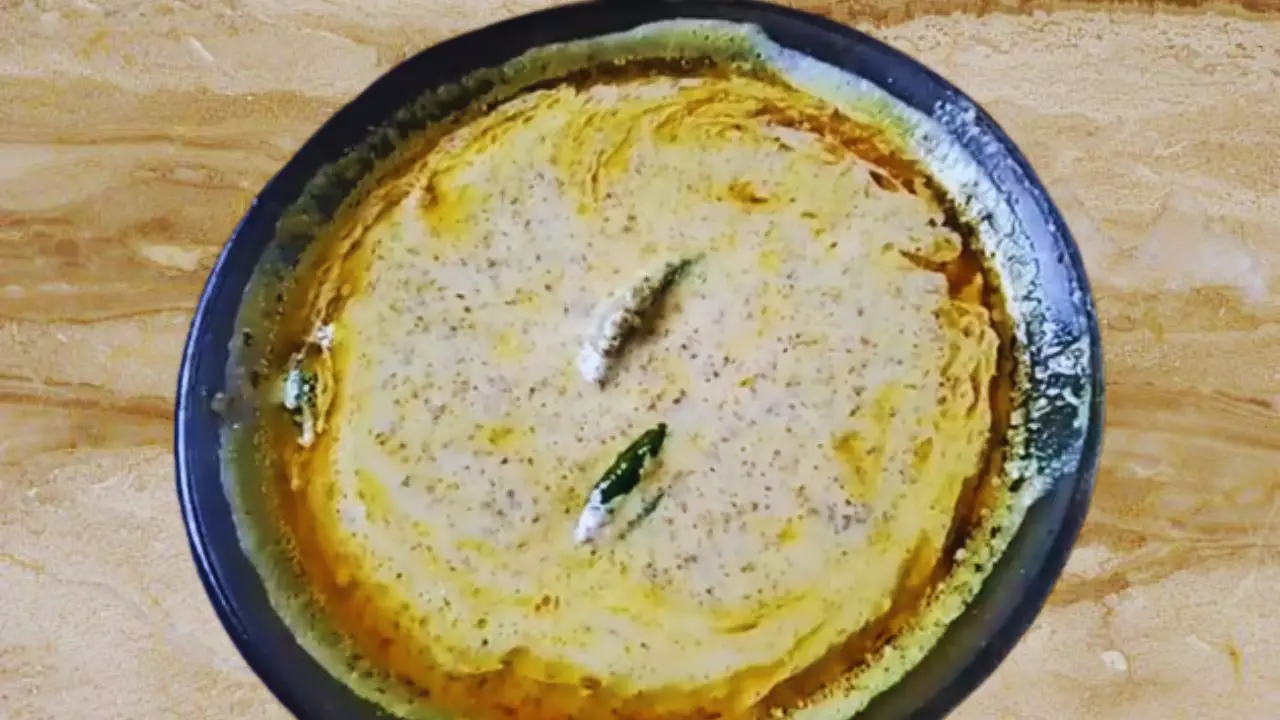
Recipe Card
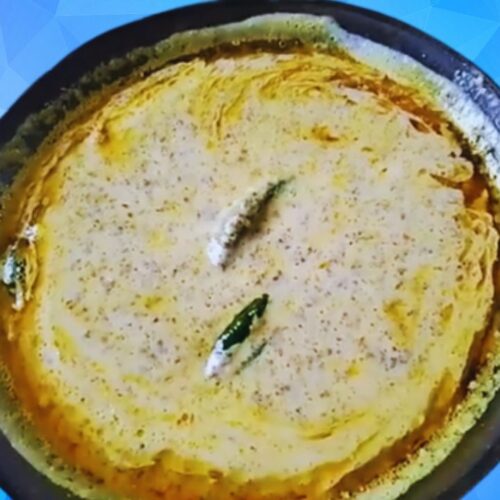
Mustard Chutney | Sarson Ki Chutney
Ingredients
- 50 grams Mustard seeds
- 12 cloves Fresh garlic
- 2 pieces Fresh green chilies (broken into half)
- 1 tbsp Sugar
- 1 tsp Salt
For Tempering
- 3 tbsp Mustard oil
- 4 pieces Fresh green chilies (slit from the middle)
- ½ tbsp Turmeric powder
- 2 tbsp Fresh lemon juice
Instructions
- Take 50 gm of mustard seeds in a bowl.
- Pour water, cover them, and let them soak for about two hours.
- Strain the mustard seeds. Wash them nicely with additional water.
- Now, put them in a grinder.
- Then, add some water to it.
- Now, add 12 to 15 deskinned, fresh garlic cloves in it.
- Follow it with 2 pieces of fresh green chilies, broken into half.
- Grind them just once to a relatively coarse and thick paste. (Pro tip: Do not grind them several times to get a fine paste at this point. You will have to blend it again after adding some more ingredients to it. Grinding it to a fine paste now will not give your mustard chutney the desired texture).
- Now, add 1 tsp of salt to the paste in the grinder.
- Then add 1 tbsp of sugar to it.
- Mix them nicely.
- Finally, add a little bit more water to the paste in the grinder.
- Blend them nicely this time to a finer and smoother paste. (Pro tip: If you want a super fine texture, blend it a couple of times. However, do not overdo it).
- When done and you are happy with the texture of the paste, transfer it to a bowl from the grinder.
- Also, wash the grinder with a little bit of water and add it to the paste in the bowl.
- Mix it nicely.
- Check the texture.
- When you are happy with the texture, set the bowl with the mustard paste aside.
- Now, for tempering the mustard chutney, take a tadka pan and heat it on your gas stove on a medium flame. When it is hot enough, put 3 tbsp of mustard oil in it.
- When the oil is hot, put ½ tbsp of turmeric powder in it.
- While it boils, put 4 pieces of fresh green chilies, slit from the middle to the tadka pan.
- Let it fry for about 10 to 15 seconds. (Pro tip: Be careful at this point because the seeds of the green chilies may crackle and sprinkle hot oil).
- Now, quickly pour the content from the tadka pan into the bowl containing the mustard paste.
- Mix it nicely.
- Finally, add about 2 tbsp of fresh lemon juice to the paste. Ideally, two standard-sized lemons would produce roughly 2 tbsp of juice.
- Give it a final stir to mix everything nicely and your homemade mustard chutney is ready to consume.

